By Fred Eichler
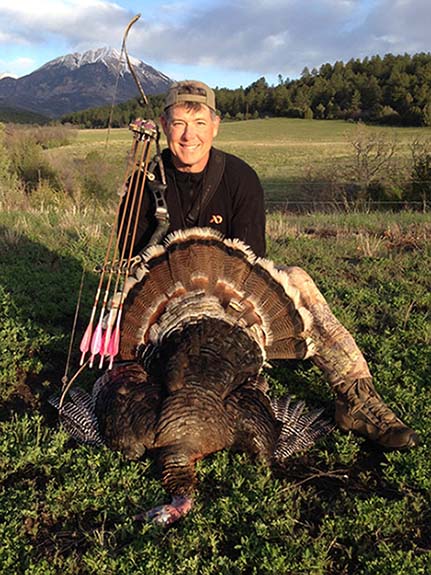
No, this is not a recipe on how I like to cook turkeys. It is about my favorite way to hunt turkeys.
I’m not really sure if I love to hunt turkeys or if they are just the only thing that is really huntable in the spring besides pigs, bears or fish. Either way, it is definitely up there on my many favorites to hunt.
Notice I said to hunt and not to guide. I also guide turkey hunters and a good portion of my clients are traditional shooters. I think the reason I like hunting over guiding is because sometimes it is tough to watch a fellow traditional guy hunt turkeys. I have learned how to hunt Turkeys by making virtually every mistake possible so I try to save my clients the pain of making all the mistakes I have made. Inevitably however, every year I cringe a little as I see history repeat itself as some of them make the same mistakes I have made.
The first tough thing about turkey hunting with traditional equipment is getting into bow range. One thing I learned by hunting turkeys without a blind is that less is best. By that I mean try and make yourself and your equipment not only camouflaged but streamlined. For example, when I am hunting turkeys and I am just sitting and calling, I take my quiver off my bow. In my mind those extra arrows and fletching are just that much more for a sharp-eyed turkey to see when you lift your bow for a shot. I am also a firm believer in full camouflage. A watch, ring, even shiny framed glasses can give away your position if you are not careful. I have seen some great looking recurves and longbows with shiny finishes on them. Those may look great on a display rack but they stick out like the proverbial sore thumb in the woods. To avoid getting busted, I like a matt finish or a camouflage finish on my bow.
I grew up hunting turkeys way before any of the “pop-up” blinds were used or even thought of. To me a turkey blind was when you cut a few branches and used them to hide behind. I think because I started out hunting turkeys the old school way it has made me a better hunter. If you can draw on a sharp-eyed turkey, then you can draw on anything.
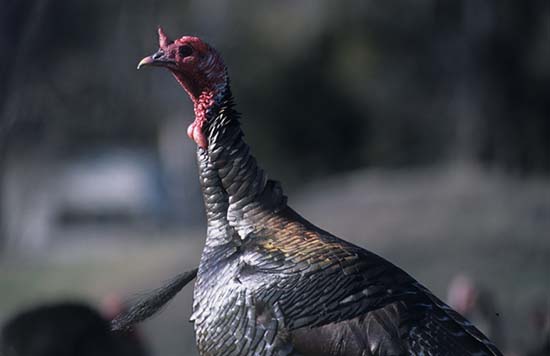
Turkey decoys were and still are a very important part of luring a bird in close enough for a good shot with a traditional bow. It gives the bird or birds something to look at and makes it easier to get away with drawing your bow.
Although I enjoy hunting turkeys without a blind, the fact is, in states where they are legal, a blind is the most effective way for a bowhunter to lure a bird in range without being busted. For guiding they are awesome. I also like turkey hunting with a pop-up blind because the shots are generally closer and I can bring my kids with me and they won’t spook every bird in a hundred yard radius. Having said that there are still a lot of mistakes that can be made while hunting out of a blind.
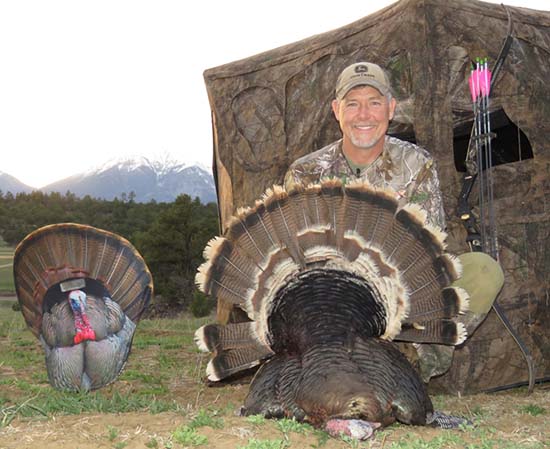
First, make sure you purchase a blind tall enough to accommodate your traditional bow. A lot of pop up blinds are designed for compounds or rifle hunters and just will not work for a traditional bow. Also, while hunting out of a blind the most common mistake I see is hunters getting silhouetted between open windows or screens. For a blind to work you must only have one side open and only open enough for you to see and shoot out of. I also prefer to go with black clothing because it blends in with the dark background of the blind. Additionally, I like to add some black camo paint or a glove on my bow hand that will be closest to the window or opening of the blind. Lastly when hunting out of a blind, I try and take care to not face the blind opening east or west. If you are facing the sunrise or sunset then light will come into the blind making you easier to spot.
I usually hunt out of an Ameristep blind with a shoot through netting. The netting helps hide you from sharp-eyed turkeys and really has no affect on arrow flight providing you have an arrow that is properly matched to your bow. To test it, try setting up a target and taking a few test shots to increase your confidence in shooting through the screen.
Besides getting a turkey in range, the toughest things about killing a turkey is knowing where to shoot them. About half of a turkeys size in full strut is actually bird. The other half is all feathers.
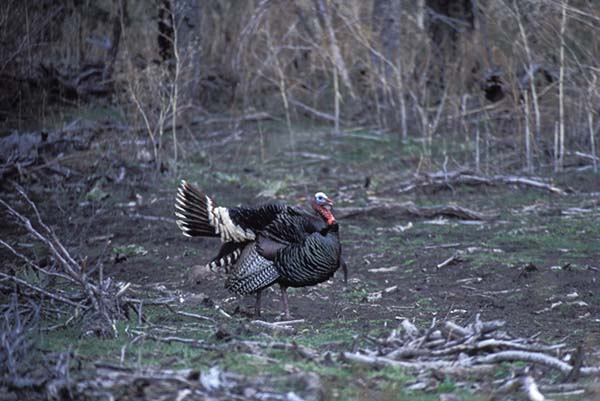
When I am hunting without a blind, I prefer to shoot a bird in full strut that is facing away from me. In this position the birds eyes are hidden from view by it’s fan. I try and shoot right in the “keester” at that angle. When in a blind, I prefer a broadside shot. When the bird is broadside I try and shoot two inches behind the wing butt. This shot will take out the lungs and put the bird down fast. Some hunters aim for the head which can be instantly fatal but I am not that good and the head is rarely still. In fact the head is usually the first thing that moves so I like the larger kill zone of the chest.
For traditional hunters, these birds can be a tough target. I try and set my decoys close in and usually only ten yards away, that way even if they hang up a little, I can usually get a twenty yard shot. If they come right in my shot is usually five to ten yards.
If you haven’t already tried turkey hunting with a traditional bow, Don’t try it. It is addictive, frustrating and rewarding. A dangerous combination that is habit forming.
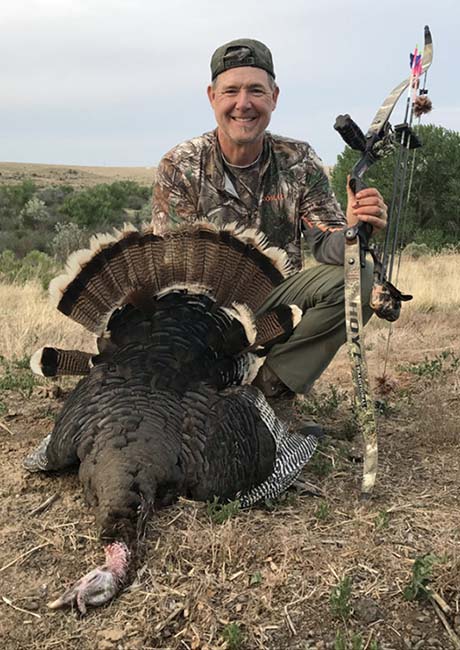














.jpg)
